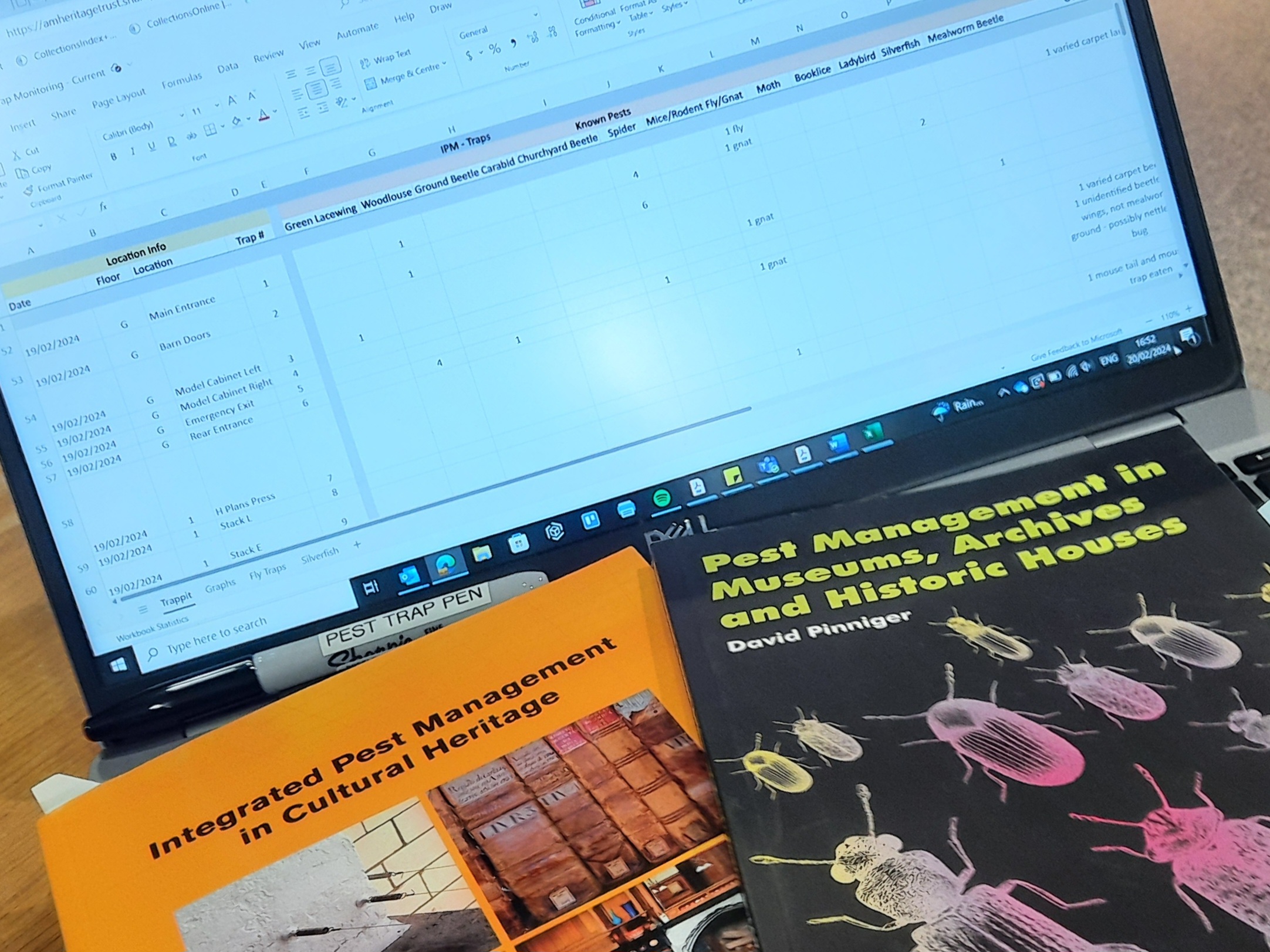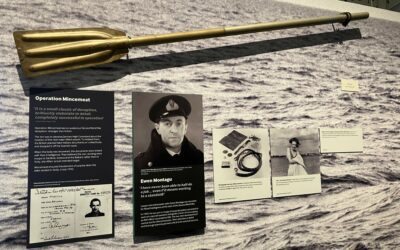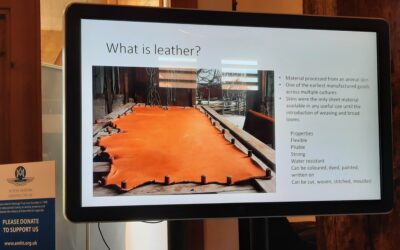Not for ghosts, on this occasion, but the similarly, seemingly invisible creepy crawlies and pests that can cause damage to the collection.
I briefly mentioned Integrated Pest Management (IPM) in my last blog and, as I’m sure you’re just fascinated to know more, I thought I would make it the focus of this month’s Collections Corner.
But what does this fancy term mean? It is simply that pest management forms a standard part of our routine and informs our actions in caring for the collection.
We integrate pest management into our work by monitoring for insect pests, modifying the environment to exclude or discourage them accordingly, and applying control treatment where it is needed.

Pest management in museums is important because there are a number of insect pests out there that find different types of collections absolutely delicious. It is usually the larvae who cause the most damage, as they need, as any child does, to grow big and strong. But, preferably, we don’t want them growing big and strong off of the collection and producing more larvae that would continue this cycle.
This is why IPM is so tied in to our housekeeping programme. The cleaner our museum and storage spaces are, the more likely it is that we will be able to discourage any pest attacks. It’s also one of the reasons why nitrile gloves are so important, bare hands and even white gloves can leave yummy organic residue that can be appealing to pests and also potentially encourage mould growth in the long term.
In our spaces, we monitor activity through traps and monitors laid out in the museum and in the store. They are all located on the floor, in corners or near walls, and we check them every three months or so, recording the species of insects that we find. As the records develop they help us understand what and how many insects we have, and reveal any recurring patterns.
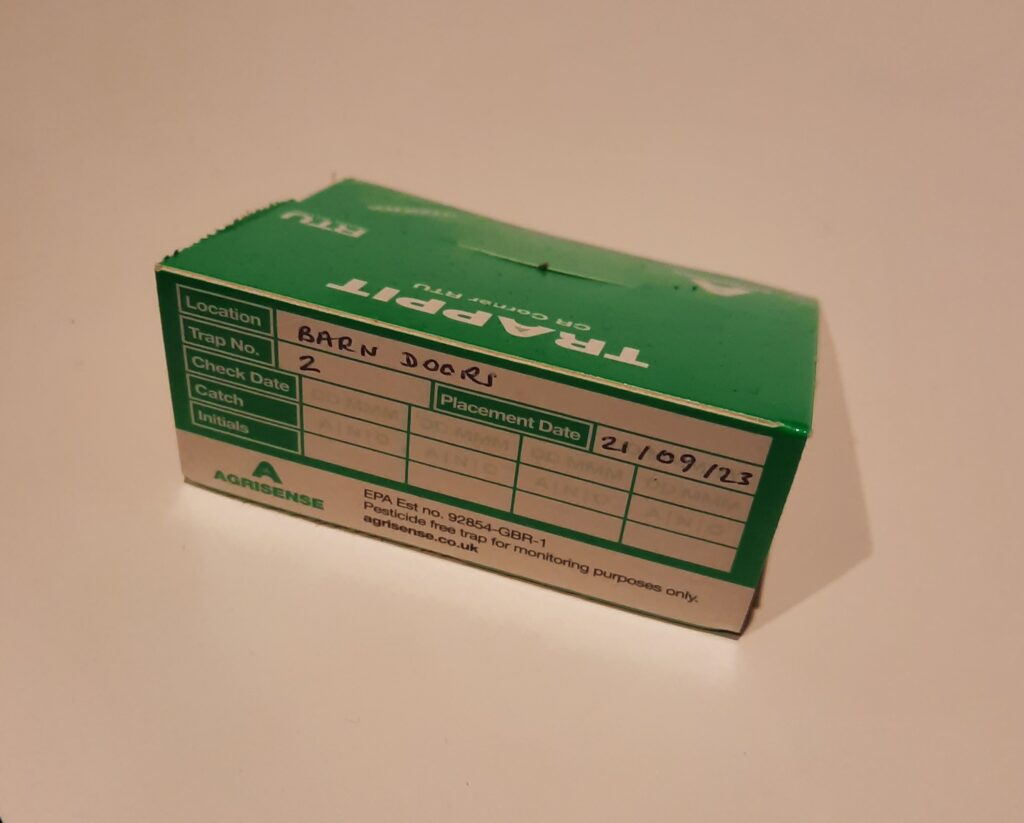
It’s worth noting that not all pests are bad, but non-pest species can still cause problems for objects, like staining them through excretion. Spiders are a great example of a non-pest and they prey on pest species! But high numbers could also indicate plentiful food and may be a sign of a large number of pests. In turn, spiders can provide a food source for some pests and so should really be discouraged where possible.
We have a few different books and charts that can help us identify the pests and non-pests that we find, and we also have cards, like these below, of common pests which give helpful facts and guidance. There are a number of specialist individuals and companies who provide advice on how to identify pests and deal with them, and design monitoring devices and traps specifically for the different types of pest you might be dealing with.
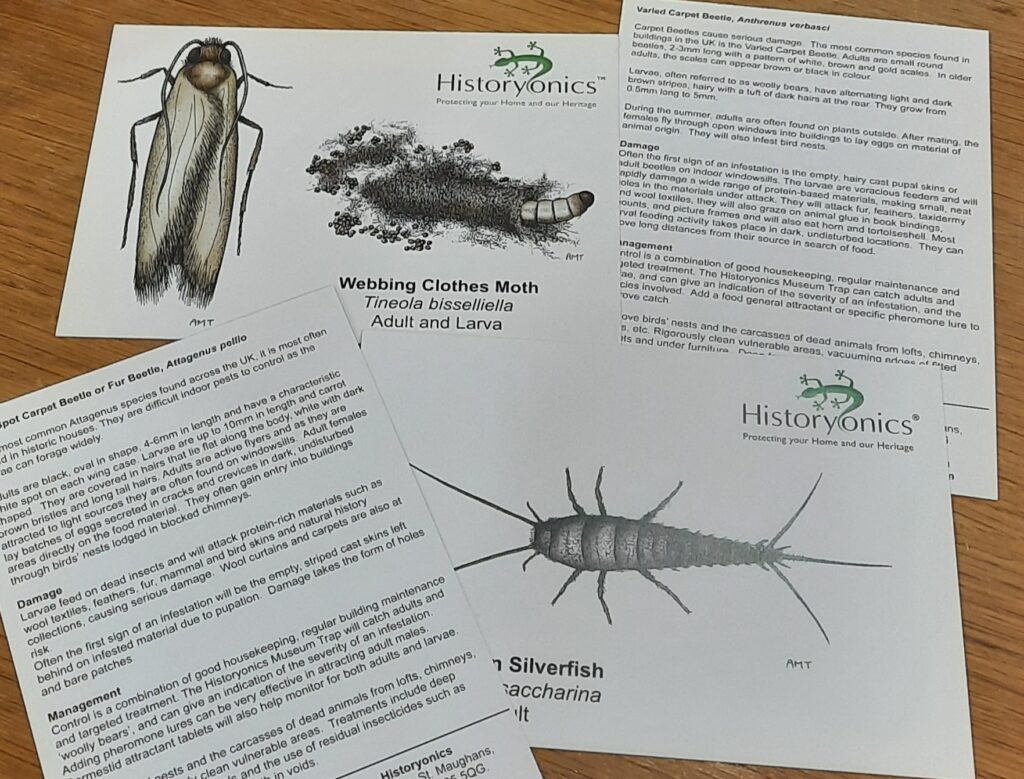
Another aspect of our work that pest management ties in to is new acquisitions to the collection. An important part of object entry to a museum or heritage organisation is quarantining items before they are mixed in with other collections items. This is because they could contain pests and we don’t want to transfer them to unaffected material. It’s also one of the reasons why we ask that potential donations are not brought in to us before the Acquisition & Disposal Committee have been able to discuss them. As we don’t have a fancy quarantine space, we rely on a very large Really Useful Box to quarantine all of the new material that we acquire (material that fits in it anyway!).
So there we have it. “If it’s something weird, and it don’t look good..”, you know what to do!
